The Quest to Keep Up
by Naishi Jain, UX ResearcherNovember 2020

Taxonomy is the science of naming, describing, and classifying items into categories. Taxonomy is essential in fashion because of the large number of products inherent in the industry, and it points us in the right direction to help us find the clothing we’re looking for. However, due to the subjective and interpretive nature of fashion (consider the sheer number of words one might use to describe a certain tshirt style), taxonomy has been quite the challenge.
“In fashion, there are so many ways of describing the same thing, which is quite nuanced and is quite internal to the industry, but can be a problem for our customers,” says Natalie Verma, Head of Inspiration at Farfetch.
Customers can have an underwhelming search experience as they type random keywords in the search bar and hope to generate a match between what they’ve typed and what they’re genuinely looking for. The gap between a customer’s search intent and result is a danger for e-commerce businesses, as a poor search experience will not only leave the customer dissatisfied but have tangible adverse effects on the business as well: reduced cart sizes and lower conversion rates. Customers are proven to stick to the few websites and products where they know the taxonomy and can guarantee that their search intent is met with the appropriate products. In essence, most retailers have taken away the customers’ control to find exactly what they like.
In the image above, Nordstrom has 22 different neck styles, 35 different kinds of materials, 18 types of patterns, and 20 styles of tops. That’s 95 unique words. A shopper needs to know 95 styles and patterns to be able to shop at Nordstrom like a pro.
Additionally, retailers subject their customers to non-standard names and classifications of products. Therefore, for shoppers, it isn’t enough to know the 95 styles and patterns at Nordstrom; they need to learn millions of other classifications to be able to shop effectively on different e-commerce fashion websites.
Consequently, customers are frustrated regarding the inconsistency of taxonomy across e-commerce fashion websites. Such discrepancies can be confusing and make shoppers feel excluded - as if the shopping experience were designed only for fashion-savvy folks who know the fashion taxonomy.
The question of opposing fashion taxonomies continues: A Henley is classified as top style at Macy’s, whereas at Nordstrom, it’s sometimes classified as a blouse and sometimes as a tunic. Different websites have different names for the jacket pictured: “puffer jacket” on Uniqlo, Asos, and Gap, “padded jacket” on Ted Baker, and “quilted jacket” on Madewell and O’Neill.
This challenge with fashion taxonomy is not new to the industry. It’s almost a mission impossible to get the same taxonomy from different retailers-- not to mention that fashion trends are constantly changing, therefore generating new taxonomies.
The inherent challenge here is the need to bridge this language gap and create inclusive taxonomy that is easily understandable for everyone.
YesPlz AI has addressed this challenge by supplementing text-based searches with visual searches. We’ve developed the virtual mannequin filter that allows shoppers to visually communicate exactly what they are looking for, without any prior knowledge of taxonomies. We tested our filter with shoppers and learned that people like to communicate their desired styles through visual elements rather than using relevant keywords to describe the style.
“I’m a visual person” was a sentiment expressed by several participants.
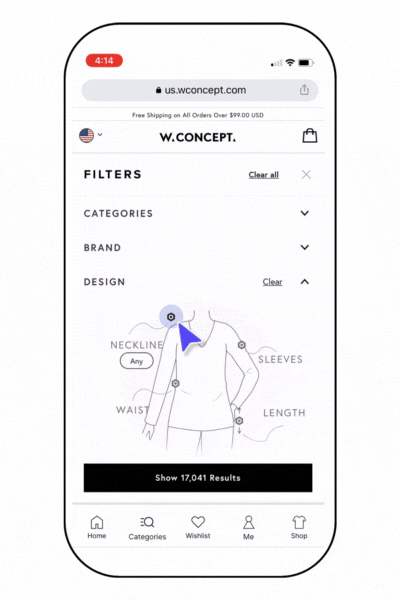
"This virtual mannequin filter empowers me to find what I’m looking for without having to know the right terminology," said one participant.
Online shoppers like the fact that they don’t have to know keywords or check several boxes to select the styles they like. They can skip over the challenges of fashion taxonomy, and simply envision their outfits--and create them, using the filter.
“The best part about the virtual mannequin filter -- I don’t need to know the name of styles” - Participant
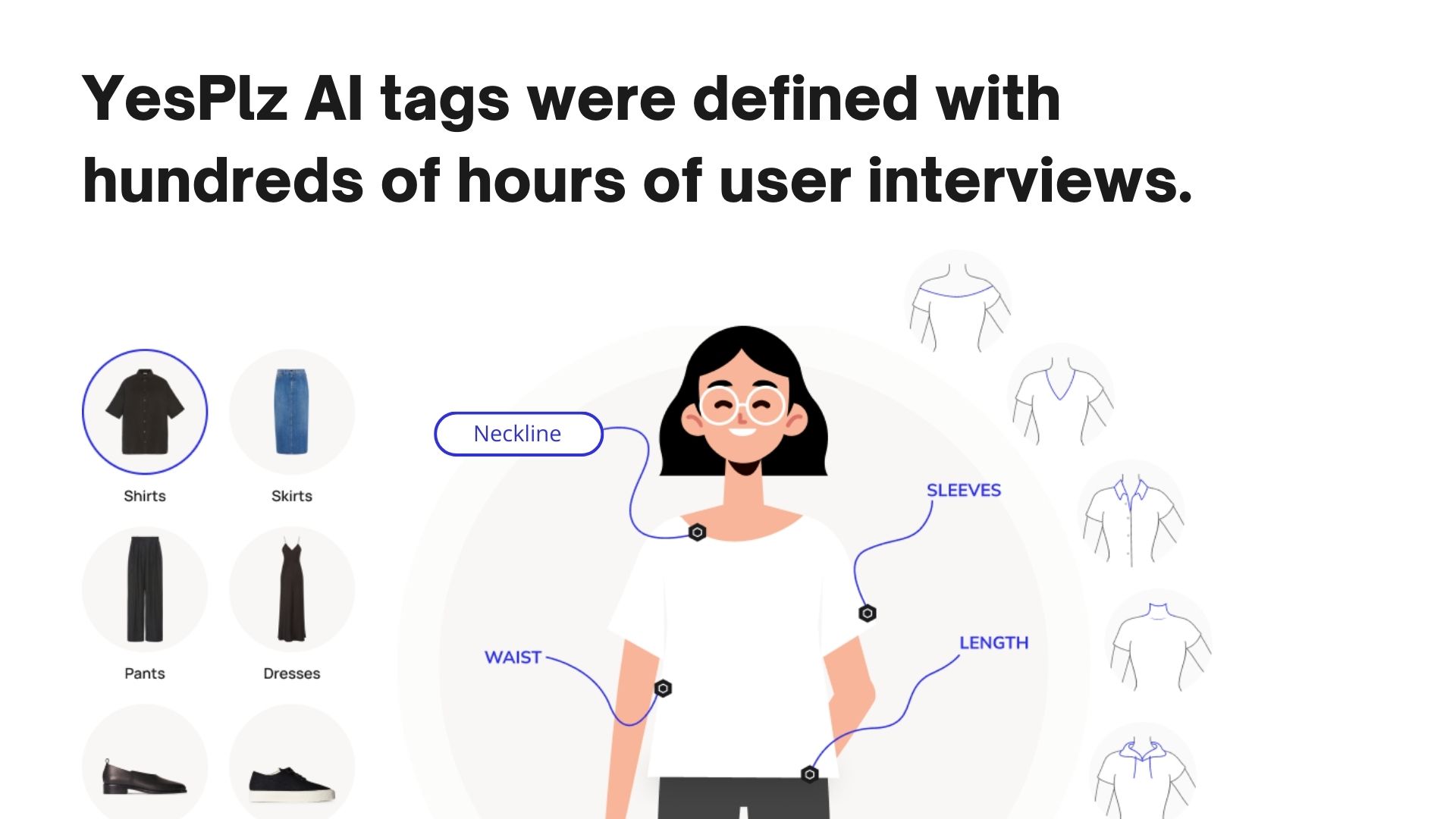
Neck Styles, Heel Styles
The virtual mannequin filter provides illustrations of various styles making it easier for the customer to understand the taxonomy. Some participants saw this as an opportunity to educate themselves on fashion taxonomy. The illustrations and its labels serve as visual aids for the customer to learn the names of styles.
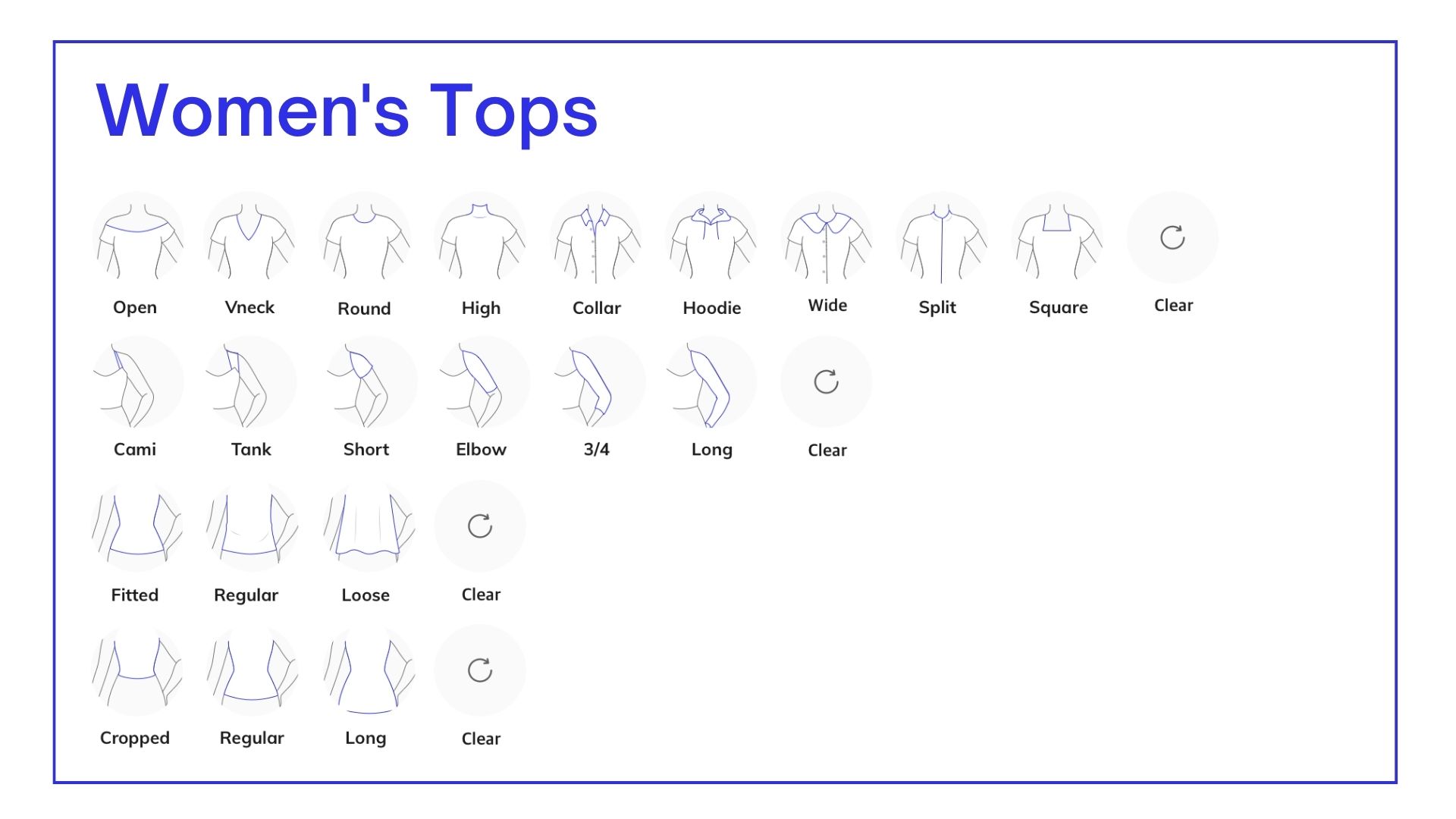
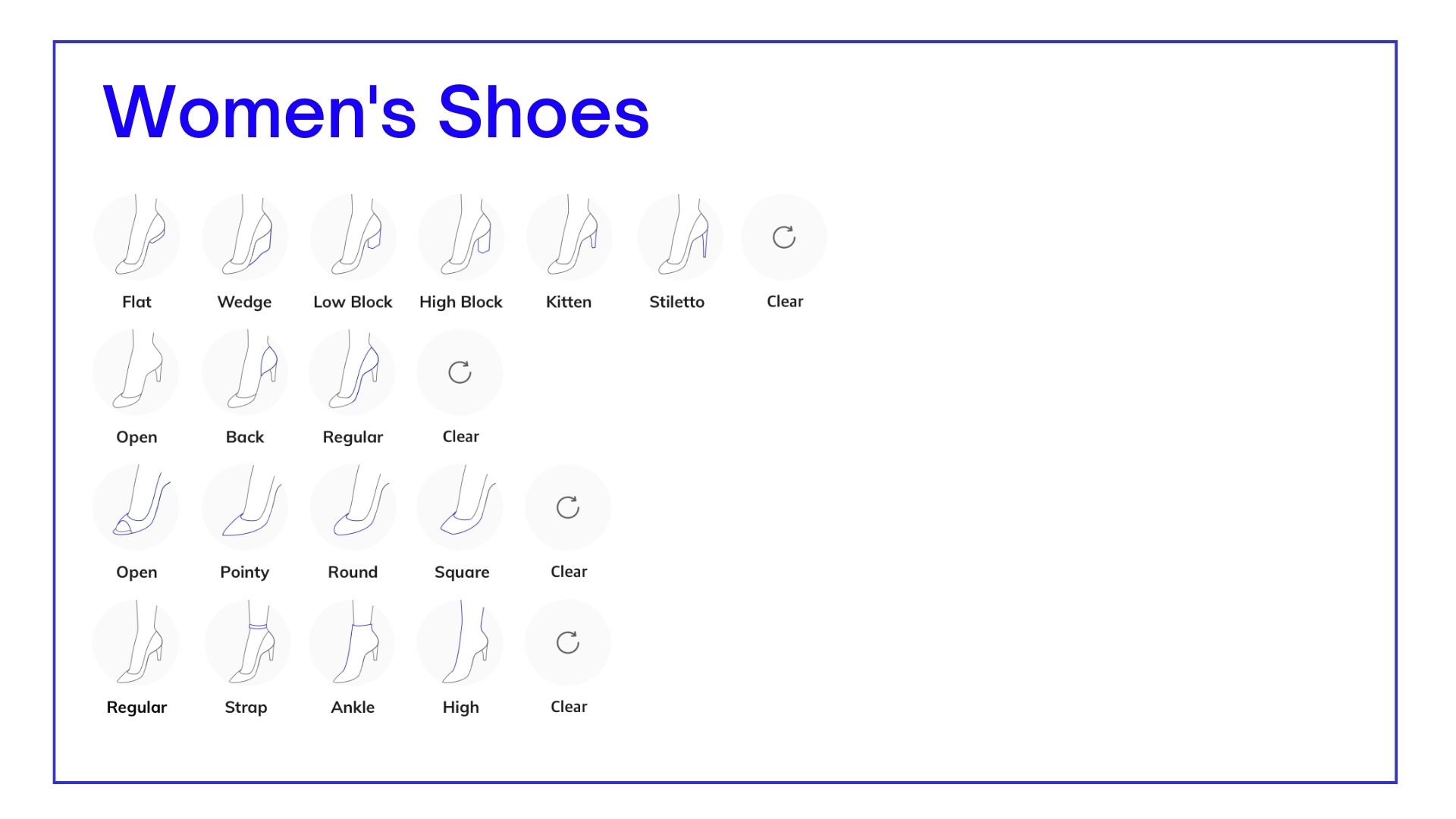
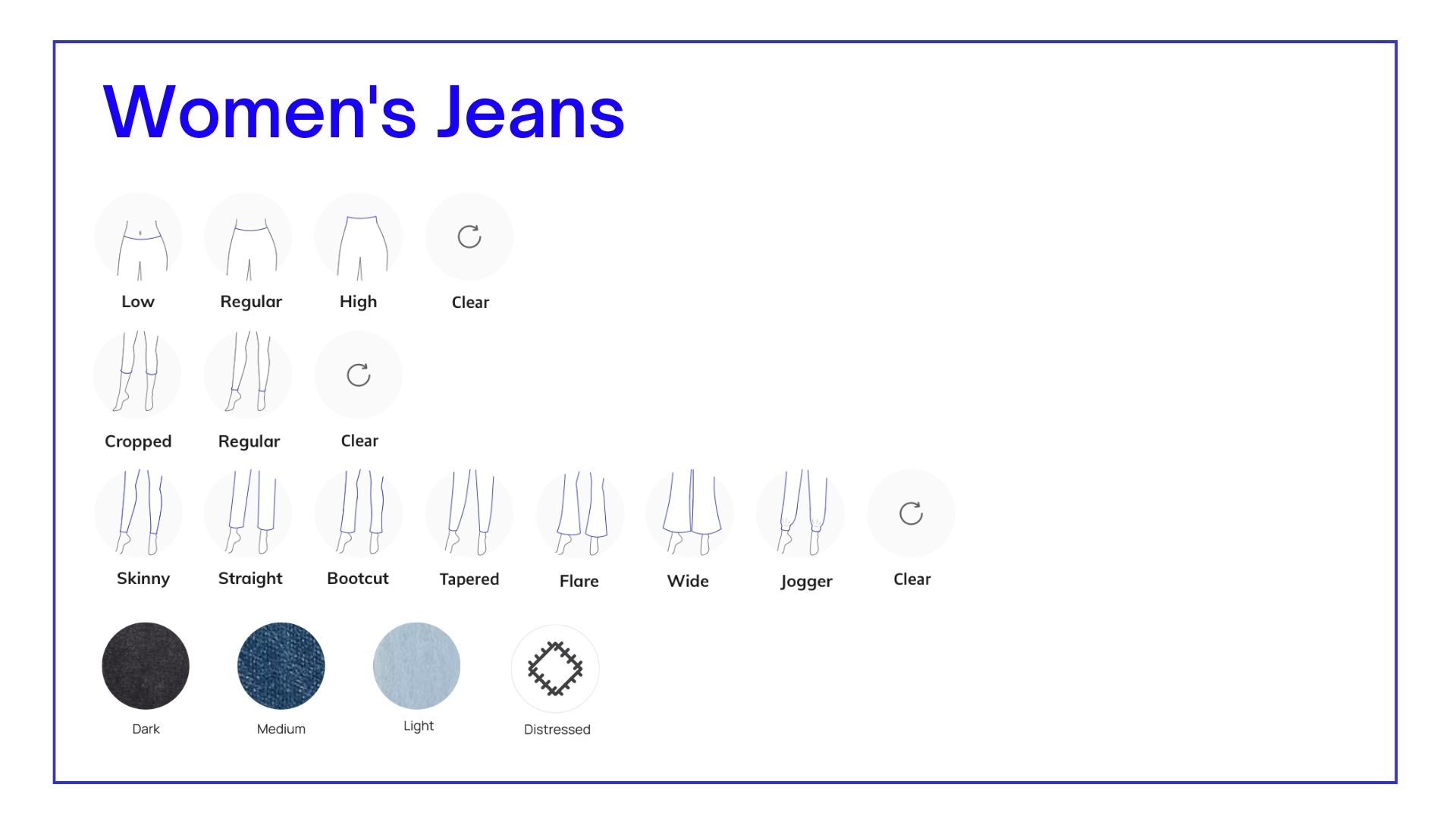
Utilizing Simple English Words
The virtual mannequin filter uses simple words to describe the styles of clothes so there’s no need for the customer to know the “right” terms. The labels strike a balance between simplicity and familiarity with common fashion taxonomy.
For example, Nordstrom has 23 different styles of jackets, with a unique name for each. It’s difficult to understand what the jacket is, from names like trucker, peacoat, and parka. However, you can create any of these jackets on our filter by knowing a few simple English words such as: short, long, round, hoodie, and loose.
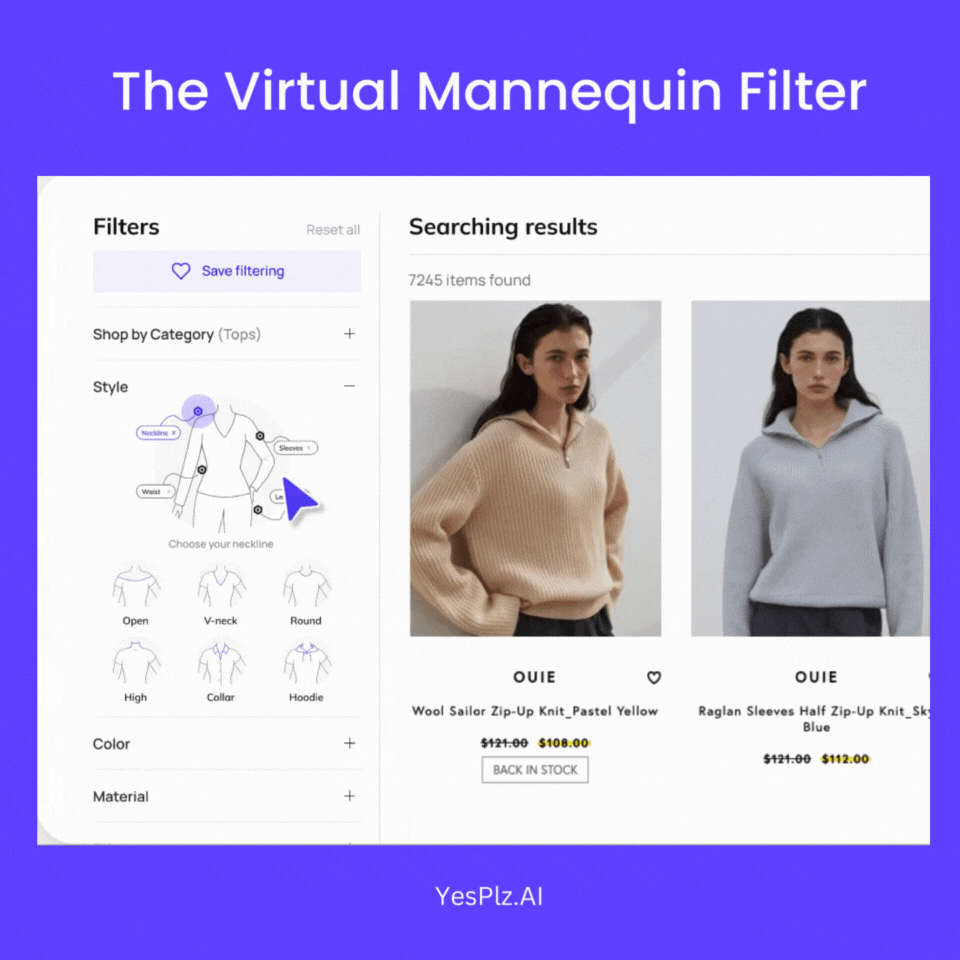
We think the virtual mannequin filter is one of the solutions to democratize world fashion taxonomy and create an inclusive shopping experience for all kinds of shoppers.
...
Retail tech should make the shopping experience easy, not complicated. Interested in learning more about how AI/ML can apply to your e-commerce website? Request a free demo or 30-minute consultation at hello@yesplz.ai

Written by Naishi Jain
UX Researcher
I've been in the UX space for the past 4 years learning and evangelizing the value of human centered design. I am passionate about developing insights that bring meaningful narratives to the data collected and design simple yet useful solutions that positively impact the user's life.
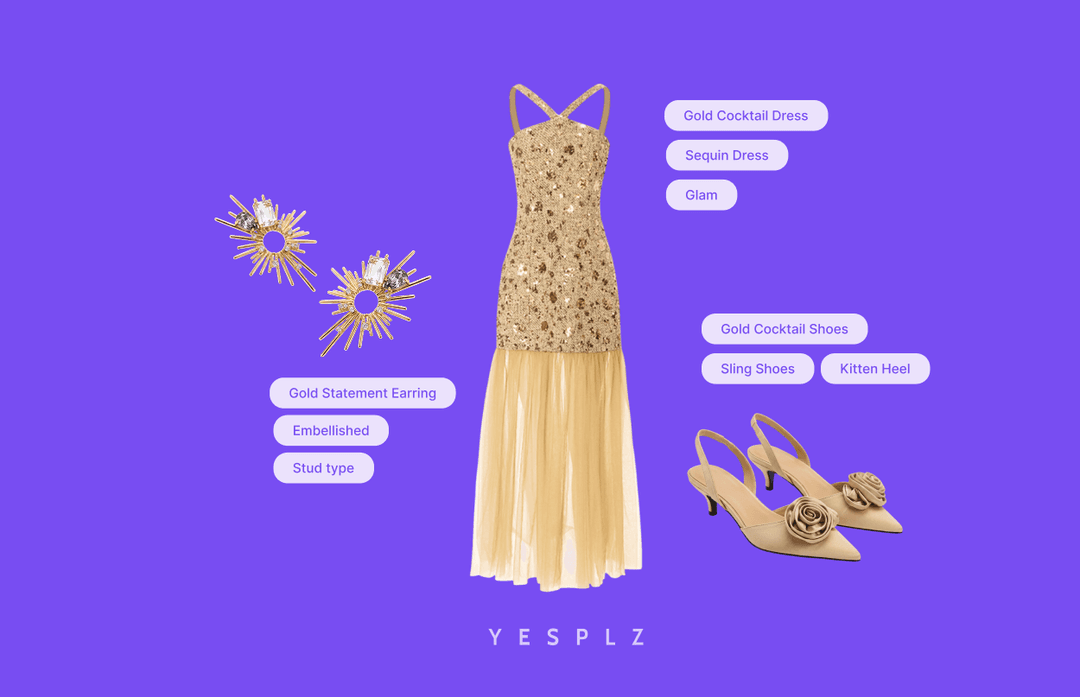
What are product tags used for? It’s a solution to low search CTR, limited filtering, manual collection curations, and more. Discover 6 essential use cases of product tags to transform search, filtering, SEO, and collections to boost sales.
by YesPlz.AI
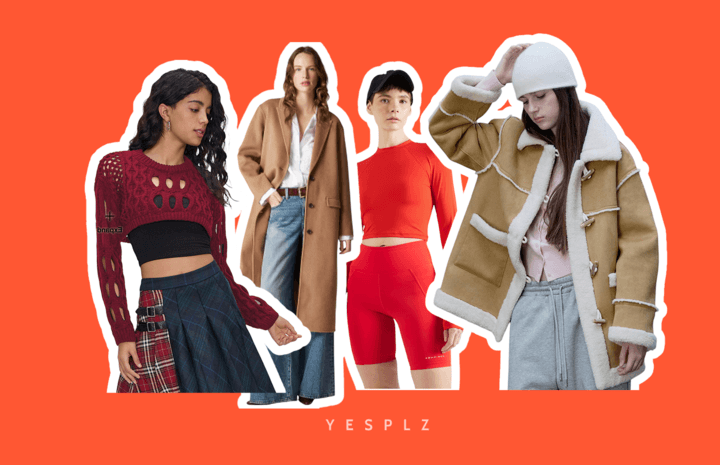
Discover 4 proven fashion recommendation strategies that boost conversions. Learn how About You, J.Crew, W Concept, and Cider drive sales.
by YesPlz.AI